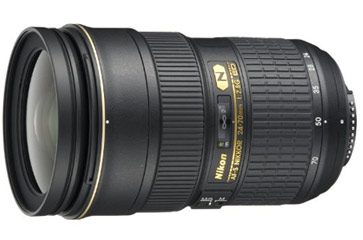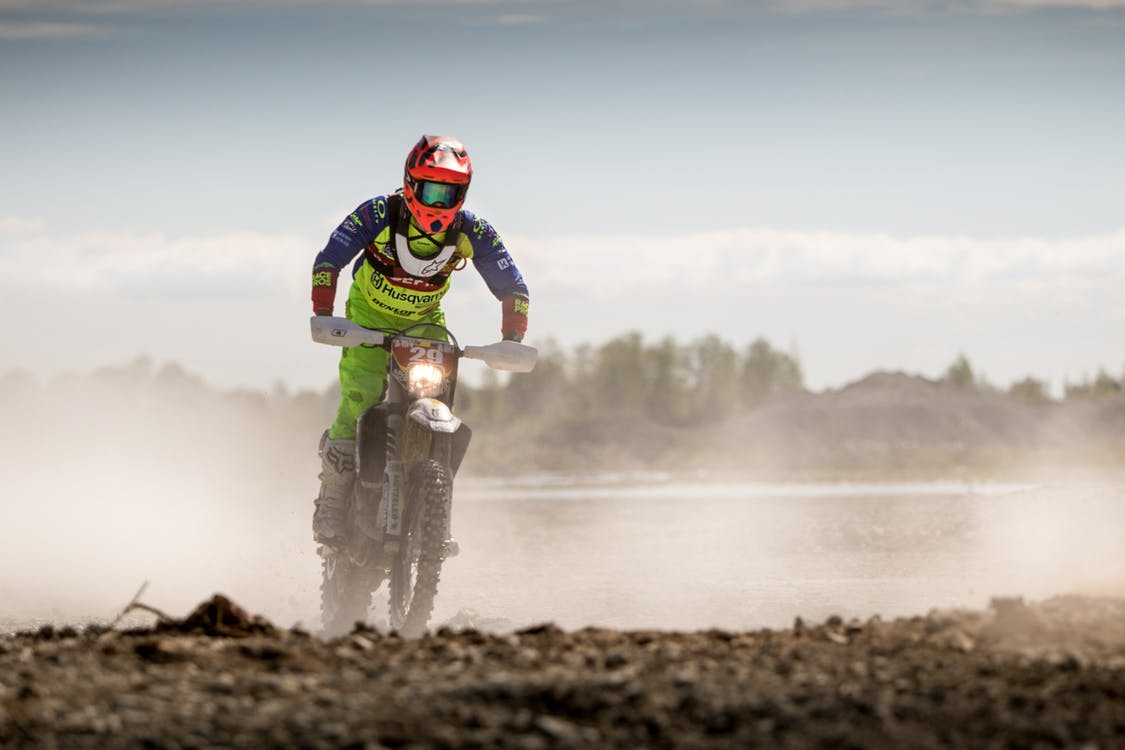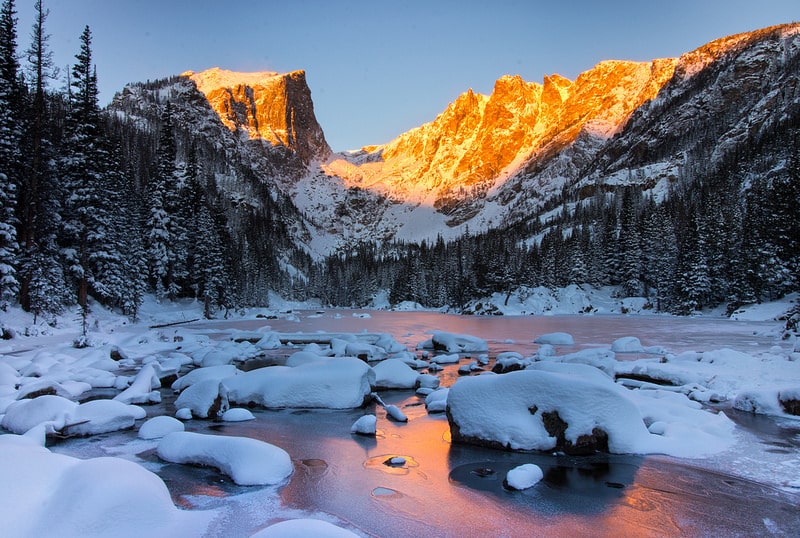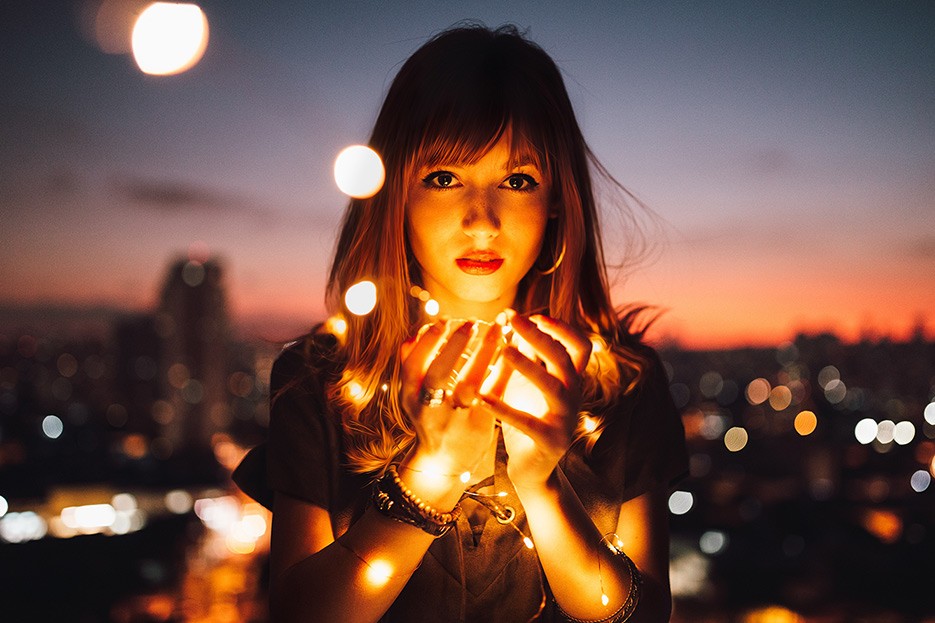For wedding photography, you want to be as prepared as possible. We’ll walk you through how to select the best Nikon Lenses for weddings.
Many photographers usually bring more than one camera body. Then there’s the different lenses, flashes, memory cards and all of a sudden you’ve got more than you can carry.
Because weddings are a one time thing, all of the things above are more or less a requirement. Sometimes you won’t have enough time to switch between different prime lenses, so a big zoom will be far more convenient. Other times, that same zoom lens won’t have a big enough aperture for shooting at night. You can see where we’re going with this.
We checked out a ton of lenses from Nikon, Sigma and Tamron and below is what we ultimately feel will give you the most for your money. The best combination of price, image quality, sharpness, bokeh and versatility is what we were after.
Table of Contents
ToggleBest Nikon Zoom Lenses for Weddings:
Tamron 15-30mm f/2.8 Di VC USD
Nikon 24-70mm f/2.8G ED AF-S
Tamron 70-200mm f/2.8 Di VC USD G2
Best Nikon Prime Lenses for Weddings:
Sigma 24mm f/1.4 Art DG HSM
Nikon 35mm f/1.8G AF-S
Sigma 35mm f/1.4 Art DG HSM
Nikon 50mm f/1.8G AF-S
Sigma 50mm f/1.4 Art DG ,HSM
Nikon 85mm f/1.8G AF-S
Tamron 90mm f/2.8 Di VC USD Macro
Technically speaking you could photograph a wedding with just about any lens, but our 10 picks will have you covered in any scenario. If you own something different, it doesn’t mean it’s bad, it’s just what we and many other wedding photographers prefer.
How to Choose a Nikon Lens for Weddings?
Versatility – Zoom or Prime?
Weddings are a one time event so you’ll need to be prepared for pretty much anything. A zoom lens allows you to quickly capture a moment without changing lenses, thus being able to be prepared for everything, at any time.
Many people use prime lenses and we’re not saying they’re not good or anything, it’s just that unless you’re a little bit experienced, carrying only a prime may not be the best option when starting out. You might not know how to position yourself properly yet, you might not have the full confidence to move freely etc.
In reality, the best choice would be a combination of both; 2-3 good zooms and a couple of primes that you use when you want to get a specific look. This is not the most budget friendly way of course, so we recommend starting out with an all-around f/2.8 zoom.
- Verdict: Bring zoom lenses if you want to be as secure as possible. Many people use primes only, but most do that after shooting a few weddings so they know what they need. Best case scenario, bring both types of lenses so you get awesome shots in every situation
Image Quality
Whether you’re getting paid for the wedding or doing it for free, you want to have the best image quality in both cases.
Most cheaper zooms aren’t sharp enough, which is why you don’t to buy just about any cheap lens. The majority of them only show good quality when stopped down a little bit, but that means their aperture will most likely be too small for any indoor work. While your talent, skills and timing are the most important, having the right gear helps tremendously when shooting a wedding.
Prime lenses on other hand have one fixed focal length, which means the quality can be much higher. This is also true for even the cheapest primes such as the Nikon 35mm f/1.8G. By having fewer glass elements, there are less issues with ghosting, flare and aberration, but even here this all gets improved as you spend more.
- Verdict: For weddings, you’ll want the highest possible quality. It’s better to save until you can afford a good lens, or even rent one if it’s a one time event and you’re not sure about the future yet.
Big Aperture & Image Stabilization
Weddings take place outside and inside. Because of the latter, you need to be prepared with f/2.8 lenses or even bigger.
Having a big aperture allows you to really blur the background and isolate your main subject from the background. If shooting indoors, you’ll probably have to raise the ISO anyways, but some cameras will simply be too noisy. A difference between an f/2.8 and f/2 aperture is 1 f-stop, which would mean you can shoot with ISO 1600 instead of 3200.
Image Stabilization is also a very welcome feature. People do move at weddings, but for the most part there’s not much movement. In those situations, IS can help you up to 4 stops with the majority of lenses we recommend.
Best Nikon Zoom Wedding Lenses
If you decide to buy anything after clicking on our Amazon links, you automatically support us. It’s what allows us to write guides such as this one.
1. Tamron 15-30mm f/2.8 Di VC USD
Wide zooms from third-party companies that would challenge more expensive Nikon zooms are hard to find, but the Tamron 15-30mm f/2.8 Di VC USD does just that.
Sitting at less than $1,200, it gives you an extremely wide view with f/2.8 aperture and Vibration Compensation (VR on Nikon). The Nikon 14-24mm f/2.8, main competitor of this lens, doesn’t have VC and costs a lot more. How much does the VC help? Around 3 stops (you can see it in TDP’s review here), which means you can shoot with 1/8 where you’d normally have to choose 1/60.
Image quality at f/2.8 is excellent although in the corners you might find it too soft so you’ll have to stop down to f/4-f/5.6 in situations where you absolutely need the sharpest corners. Vignetting is also very well controlled for such a wide zoom, which means you will have less to fix (if you decide to) when shooting on a bright day.
Why would one go with the Tamron? If you absolutely need f/2.8 and VC. Thanks to USD (Ultrasonic Silent Drive) it focuses quietly and accurately, but the more expensive 14-24mm tends to be more accurate, at least when shooting in more difficult conditions. So if you absolutely require having the fastest and most accurate AF, the Tamron does not win here (it’s not slow though, just not as fast). Everything else is pretty much the same.
The 15-30mm length is best for capturing the crowd, group shots, environments, interiors and such.
You can buy it at Amazon or see more reviews here.
2. Nikon 24-70mm f/2.8G ED AF-S
Zoom lenses are also an excellent portrait choice, but they can get quite expensive, especially if you want an f/2.8 zoom. With that in mind, the Nikon 24-70mm f/2.8G ED is our top pick for both DX and FX shooters that want an all-around, high quality zoom that can be used in low light and outdoors, for all different types of photography.
The 24-70mm is a type of lens you can take anywhere and forget about the rest. For portraits, the 24mm is wide enough to capture group shots, or just your subject with some other elements included (interiors etc.). When you feel the need to get closer, simply twist the zoom and you’re at 70mm which is good for isolation your subject. Best of all, the lens stays at f/2.8 throughout its entire zoom range, and that’s one of the biggest reasons for its hefty price.
There’s a cheaper Tamron 24-70 f/2.8 with Vibration Reduction and similar image quality. However, what ultimately led us to go with Nikon was more solid build quality and construction, and a faster, more reliable AF system even in low light. You can check out the comparison at Camera Labs, where both corner and center performance look similar for both lenses. As of 2015, Nikon also sells their own 24-70mm f/2.8 VR but it’s at around $2,200.
You can buy it at Amazon or see more reviews here.
3. Tamron SP 70-200mm f/2.8 Di VC USD G2
The Tamron 70-200mm f/2.8 Di VC USD G2 was released a few months ago and is our favorite 70-200mm lens out there.
Here’s why. It’s cheaper than the rest, delivers nearly identical image quality and sharpness, has great Vibration Reduction with 5 stops of help and great auto focus. On top of that, you get 6 years US warranty! Talk about customer support.
Compared to Nikon’s most expensive 70-200mm f/2.8 FL, you could get two Tamron’s for that price. The image quality is nearly indistinguishable between the two, however the Nikon is slightly more accurate when it comes to auto focus. The Tamron is good, don’t get us wrong, and it’s precise and quiet, but there’s only a few people that would be willing to spend twice as much to get even better AF than what you get with this lens.
For portraits, having the absolute fastest AF is not such a priority, which is why it’s better to save the money.
The lens is perfect even for high megapixel cameras such as the D810 with its 36MP sensor. The VC works wonderfully up to 5 stops so you can expect sharp results with 1/15 where you’d need ~1/500 normally. The lens has weather sealing so if you’re shooting outdoors in difficult weather, or happen to be near water, you’ve got much less to worry about.
You can buy it at Amazon or see more reviews here.
Best Nikon Prime Wedding Lenses
They’re not as versatile as zooms, but have better looking bokeh and are better for shooting in extreme low light and blurring the background. Smaller and lighter too!
1. Nikon 35mm f/1.8G AF-S DX
The Nikon 35mm f/1.8G is the most affordable Nikon prime lens, offers superb image quality and fast auto focus. If you’re looking to buy your first lens after the kit 18-55mm or just never owned a prime lens before, you’ll be amazed by the quality as these lenses are top notch!
Aperture f/1.8 will make your portrait shots look more professional due to the shallow depth of field and lovely bokeh. Colors and sharpness are also really good for a lens this price. It’s a perfect choice for a whole lot of different styles, from night time, portraits, kids and pets running, nature to traveling and wedding photography.
Since it’s for DX cameras (all up to D500), the field of view once mounted will be equivalent to a 50mm lens due to the 1.5x crop factor. This makes it a great choice for casual portrait photography, but also anything that involves other parts surrounding your subject (trees in the nature, indoor objects).
Simply put, if you want to shoot everything including portraits, but don’t want to spend too much yet, you’ll love the 35mm f/1.8G.
You can buy it at Amazon or see more reviews here.
2. Sigma 35mm f/1.4 Art DG HSM
The Sigma 35mm f/1.4 Art DG HSM is one of the sharpest lenses on this list. On a full frame DSLR, it’s great for group shots and environmental portraits. This makes it an excellent choice for weddings, streets, and concerts, and is ideal for when you want to have more than strictly your subject in the shot.
Quality wise, the lens is spectacular. Sigma’s Art line features lenses that have excellent sharpness, contrast and colors even at f/1.4. It’s quick at auto focusing thanks to the Hyper Sonic Motor, although it’s not unusual for it to hunt in low light. Mounted on a FF camera, you’ll see some vignetting at f/1.4 as with all other 35mm lenses, but it’s nothing drastic.
For a 35mm lens, bokeh looks surprisingly good, and it also features full time manual focus (FTM) and has a closest focusing distance of 11.8″ (0.30m). On DX cameras like the Nikon D500, the field of view will be equivalent to a ~50mm lens on full frame, which is a common focal length for all different sorts of portraits.
There is a Nikon 35mm f/1.4G available, but it costs twice as much. Does it beat the Sigma anywhere? It shows a little bit less flare and has a different bokeh look (which is subjective), but the Sigma is noticeably sharper, especially in corners. One thing to note, the Nikon lens has weather sealing. It’s up to you to decide which one fits your work style, but for the money, nothing beats the Sigma.
You can buy it at Amazon or see more reviews here.
3. Nikon 50mm f/1.8G AF-S
The Nikon 50mm f/1.8G is our favorite prime for both newcomers to photography and more advanced users looking for quality in a lightweight lens.
On DX cameras, it’s equivalent to a 85mm lens which is an ideal length for closer, more personal portrait shots. If you’re looking to spend little and don’t own any lenses yet, the 50mm f/1.8G will become your best friend!
If you often find yourself using the kit lens more or less near 50mm, this lens was made for you. Not only is quality years ahead of the kit zooms, it also focuses faster and lets you go all the way to f/1.8! The 35mm and 50mm prices are almost identical, yet we recommend you to go with the 50mm if you prefer a little bit tighter shots (15mm difference between the two lenses) and want slightly better looking bokeh.
It’s still recommended for the same types of photography as the 35mm above though.
You can buy it at Amazon or see more reviews here.
4. Sigma 50mm f/1.4 Art DG HSM
There’s a ton of 50mm f/1.4 lenses out there so we know we had to include one due to their popularity, and we decided to give our spot to the Sigma 50mm f/1.4 Art DG HSM. It costs more than Nikon’s version but is better when completely wide open, which is where you’ll want to use it anyways.
It’s bigger and heavier (28.7oz/815g) too, but feels more sturdy in hand. It takes 77mm filters instead of 58mm, so if size is very important to you, you might want to skip the Sigma. It’s not huge by any means, just bigger than both Nikon’s 50mm lenses. Just like the 35mm above, it has a 9 blade diaphragm so bokeh looks soft and pleasing to the eye. Bokeh looks good thanks to a 9 blade aperture and you will hardly see any haze, chromatic aberration or ghosting.
The Sigma 50mm f/1.4 has an AF motor built-in which means it will auto focus normally on bodies like the D3400 and D5600. Speaking about focus, the accuracy and speed are very good thanks to the Hyper Sonic Motor, but you can always expect some hunting from time to time with all third-party lenses. It’s great for both stills and action photography though, including low light. You can see the review which mentions the difference between focusing on Canon and Nikon bodies at Photography Life.
If you can’t decide which 50mm to go with, here’s a tip: if you absolutely need/want f/1.4 with great sharpness and plan on using the lens at this aperture most of the time, get the Sigma. For low light or just beautiful bokeh, that extra third-stop of light can make a big difference and for weddings this is important.
You can buy it at Amazon or see more reviews here.
5. Nikon 85mm f/1.8G AF-S
For wedding, concert, portrait, night time or close sports photography, we recommend the Nikon 85mm f/1.8G AF-S because the quality and sharpness are top notch. It’s also relatively affordable and gives you more bang for the buck than the f/1.4 version
There’s just something about 85mm length on both DX and FX cameras that makes it magical for portrait photography. The depth of field looks shallow even when stopped down a bit because your focal length is quite long, but obviously shooting at f/1.8-f/2.8 makes bokeh and background look amazing.
Compared to the lenses above it’s not as good for street, tight indoor and walk-around purposes, but is ideal if you can’t always be close to your subject. A perfect example would be weddings, outdoor nature shots or simply situations where you have a lot of space between you and your subject. Its closest focusing distance is 80cm/31 inches. It focuses quickly and accurately, and is faster than its f/1.4 brother.
You can buy it at Amazon or see more reviews here.
6. Tamron SP 90mm f/2.8 Di VC USD Macro
No wedding lens list is complete without a macro lens. The Tamron SP 90mm f/2.8 Macro gives you the most bang for your buck.
It’s got everything you’d want in a macro lens. Quick and precise auto focusing, great image quality, Vibration Reduction and little to no quality issues. Chromatic aberration is very well controlled, same goes for flare and distortion which you’ll rarely have on pictures. For a more precise rundown on how much flare etc., check out the ePhotozine review here.
The Tamron 90mm has a focus limiter to make it easier when focusing on subjects close to you, and while AF performance is quick and precise, you might get hunting from time to time. It’s also compatible with the Tamron Tap-in Console so you can manually calibrate the lens and get even better performance if you experience any issues, as well as update the lens’ firmware. It’s a simple dock that can be attached to your computer.
Because of its Vibration Reduction, it’s perfect for shooting details at weddings since you won’t need to use a tripod!
You can buy it at Amazon or see more reviews here.
Best Nikon Lenses For:
First and foremost, I’m a husband and father. Then professionally I’m photographer, designer, blogger, and Esty store owner. My homebase is near the stunning Wasatch mountains in Utah but I love traveling with my family as part of our homeschooling journey. I also love teaching and helping out others. My faith is one of the biggest aspects of my life and brings be a consistent joy that I haven’t found in anything else. My main blog is BestPhotographyGear.com and I strive to make photography simple for anyone looking to learn or find gear for their individual needs. By nature, I like to study, research, and analyze things and I use that help provide the best advice and reviews I can.














